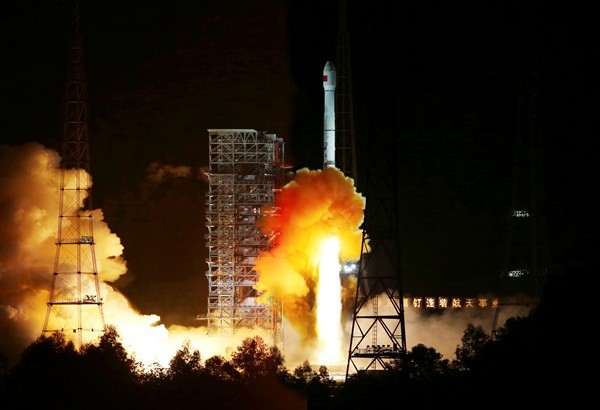The plan to land an unmanned spacecraft on the moon before going back to Earth yesterday moved a step forward with a test spaceship shifting into lunar orbit for further testing.
The service craft decelerated with success yesterday, thus granting entrance to an 8-hour orbit, stated the Beijing Aerospace Control Center.
Accompanied by instruction from the base, it was put into a halt around 3 a.m. and went through an elliptical orbit around the moon with a perilune (or closest point) of about 200 kilometers and an apolune (farthest point) of approximately 5,300 kilometers.
The module will make a second and third braking operation in Jan. 12-13, on its early hours, so it can be allowed to enter the target of 127-minute orbit for tests in preparation for the Chang'e-5 mission, mentioned the center's chief engineer, Zhou Jianliang.
The lunar orbiter was launched on Oct. 24 last year.
The craft was loaded with support systems and will collect further data to aid in planning of the 2017 Chang'e-5 mission, according to China Central Television.
"The first braking is the most crucial," Zhou stated. "Precise braking must be performed at perilune to prevent it from flying away from the moon."
The service module was detached from the orbiter's return capsule on Nov. 1 the previous year, and it returned to Earth after eight days of its mission.
The orbiter was a pilot test for the final steps of China's three-step lunar program consisting of orbiting, landing and returning.
The Chinese lunar exploration program has already set the pair of orbiting probes in motion. In 2013, it has landed a spacecraft on the moon with a rover aboard. None of those were made to come back to Earth.
The program received assistance from Russia but has developed greatly independent from America, which is now already on six decades of sending people to space.
The first Chinese astronaut was sent to space in 2003. China is the only other country aside from the United States and Russia that has independently attained manned space travels. It also has launched a temporarily staffed space station.
Chang'e-5 is planned and designed to make a lenient moon landing and collect an estimated 2 kilograms of samples of lunar rock and solid before returning to Earth.
If this mission is successful, then China would be the third country after the U.S. and Russia to fulfill the challenge of lunar exploration.



























